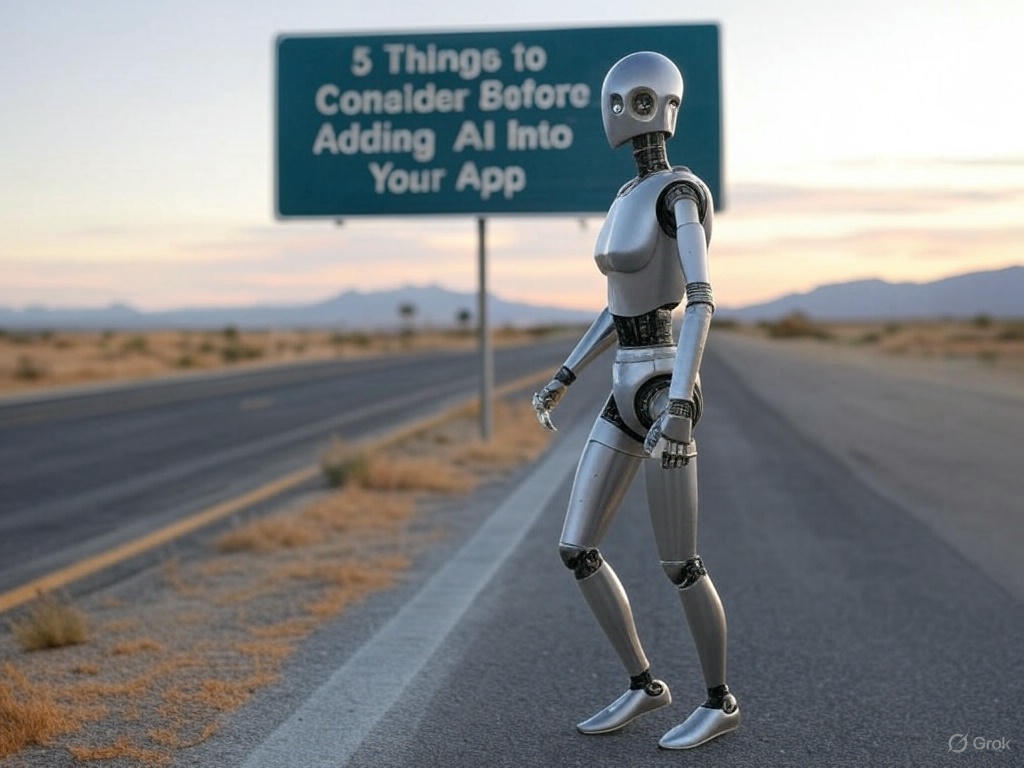Thursday, February 24, 2022
-
3
min
The 3 ways to use Augmented Reality in marketing and sales
Augmented reality (AR) has become a powerful tool for brands looking to elevate their marketing. By blending real world and virtual layers, AR can take a traditional sales experience and add new levels of convenience and interaction that will leave your customers buzzing.
If you’re wondering how to make AR part of your marketing strategy, here are the three best ways to do it.
Read: Enhancing Your Tamagui Apps: Media Queries and Animations.
Brochure, menu and guide implementation
Physical visual media has a tough job to really engage people. The problem is we’re so used to seeing sales brochures that we don’t interact with them as much anymore – we flick through them and scan the text, but don’t take an awful lot of it in.
That’s where augmented reality comes in. With AR you can place trigger points around your brochure that bring up extra information when a reader passes their phone over them. This introduces an active element as the customer seeks out those trigger points, which makes the details much more engaging to read than if they were a static block of text.
AR can also allow you to show accurate, real-time details when you’re dealing with changing information. For example, you could have a travel brochure that shows flight costs to different destinations or an auction catalogue with dynamic market valuations – with the AR app fetching the latest information each time it scans the trigger point.
This doesn’t just work for sales brochures though. You can use a visual trigger to augment pretty much any physical item.
Consider restaurants. Today people want more and more information about the food they eat, from allergens and nutrition to the origin of ingredients, but menus and packaging only have so much space for text. With AR, customers can run their phone over a menu or a spread of cakes in a cafe counter and have all of that information overlaid on the screen.
The same could be applied to maintenance and repairs too. How many times have you opened up your car bonnet or the back of your laptop when something’s not working, only to find you can’t recognise the part you’re looking for? Whether your customers are trying to fix something or just diagnose a problem, AR labelling can help light the way.
Product visualisation
We’ve talked about using AR to add detail and context to products. But the tech is just as effective working the other way too, by helping customers put your products into their context.
You’ve probably already seen or heard of this before. Leading fashion and cosmetics brands are getting into AR to allow customers to virtually “try on” anything from makeup to glasses and even new hairstyles. Apps like IKEA Place have brought the concept over to home decorating, and there’s potential for proptech AR that could let homebuyers accurately visualise their furniture in a new space during house viewings.
By working together with your phone’s camera and accelerometer, these apps can allow you to see how a new armchair looks in the lighting of your living room or how lipstick matches your skin tone. And the extent of what we can do with calculating visual space is always increasing – you can even use AR to race Mario Kart around your own home.
Product visualisation might look like a gimmick to some, but ultimately it’s another tool for giving customers greater reassurance before they commit to buying. Wherever there’s an element of risk for customers, whether big or small, there’s a case for AR to give them peace of mind.

Brand storytelling
AR isn’t just for showcasing product features or adding to the sales process. With a little creativity and a touch of blue sky thinking, augmented reality can also open up some unique opportunities to weave a narrative around your brand.
Imagine you’re sponsoring a large event – let’s say the London Marathon. You could place trigger points at stages around the course so that spectators can interact with your brand as they follow the runners. The AR doesn’t have to be directly related to your products at all – it could be a different visual filter at each stage that users are encouraged to screenshot and share on social media.
AR can also work wonders in settings like trade shows or shopping centres, when your brand is competing against others for attention. You could build a virtual treasure hunt around your stall or shop, for example. Passersby will see people following their phones and want to see what’s going on for themselves. Never underestimate the power of curiosity and FOMO.
The possibilities for creating hype around your brand using augmented reality are huge. It creates a fun interactive experience for the people using it, and to the people on the outside it paints you as a brand at the leading edge of tech and customer experience.
Looking to enhance your brand marketing with augmented reality? Speak to us to see how Morrow can help or read our guide on putting together a business case for AR.
Chech out our recent AI Hackathon here.




.jpg)









